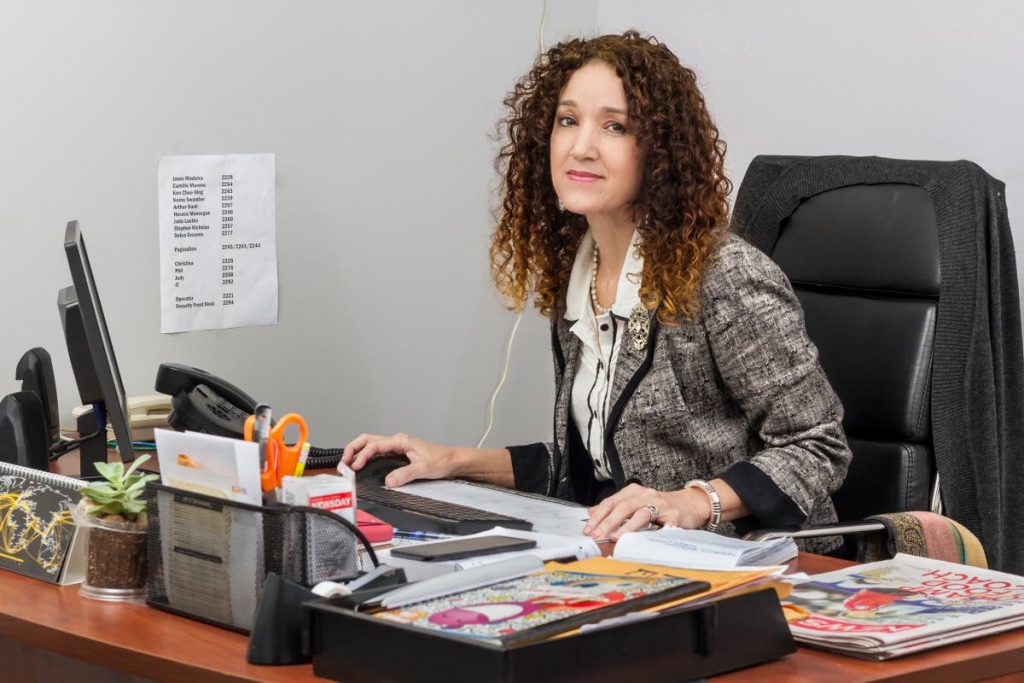Getting it right, first

Although I didn’t know Therese Mills very well, it’s at least partly thanks to her that I’ve sat in two of the seats she once occupied, now as editor in chief of Newsday and previously at the Guardian. Those were ground-breaking achievements on her part, although because she led the way, it seems unremarkable now for a woman to head a national newspaper in this country.
A few years ago, in fact, every newspaper in TT had a woman editor in chief, and despite the everyday sexism women still encounter in every walk of life, that was another milestone that generally went unremarked – and for which again Mrs Mills deserves a share of the credit.
There’s another connection that goes much further back: many years ago I spoke to her about her early days at the Port of Spain Gazette, when she was a junior reporter and my grandfather Arthur Raymond was the revered deputy editor.
After Mrs Mills’s still-mourned departure, the newsroom on Chacon Street was led by another veteran, Jones P Madeira, still with us as our executive editorial consultant, a calm and genial presence whose long experience and pacific temperament often help to smooth ruffled feathers and solve thorny problems in the newsroom.
But now I’m in the hot seat as Newsday enters a new age, and not just because it’s reached the quarter-century mark. We have new offices, a new website – and a new mandate.
We’re now on Pembroke Street, just north of the Hall of Justice and the more salubrious surroundings of Woodford Square, and our physical move is perhaps symbolic of other changes in the paper.
Actually, that’s another change: we’re learning to think of ourselves not as a newspaper but as a news organisation.
Yes, we still put out a print edition every morning, but who knows how long that will last?
The people of this country have a strong tradition of reading newspapers – just as they have produced a surprising number of newspapers over the past two centuries – but they also love shiny new things, and have taken to the age of information like ducks to water.
So while print circulation is holding steady, our online readership figures are rising rapidly and steadily. Fewer and fewer people will walk down the road to the parlour in the morning to spend their $2 on a newspaper, now that they can just reach for their laptops, tablets or phones. And they want their news now, day or night.
So that’s what we’re giving them, in our digital push.
We can’t always be as quick as the people on the spot, who post photos and video from accident sites and murder scenes. Not that we would want to do that anyway. But unlike them, we have to verify what we publish before we put it out there.
That’s the advantage the traditional media have: credibility. We have sources that the average social media user doesn’t. Sometimes we make mistakes, sometimes we’re given the wrong information, but we do our best to get the facts and check those facts before we put them online or in print.
The 24-hour news cycle of the 21st century brings extra pressures, but the speed and ease of online publishing give us some advantages, too. We don’t have to stop the press and replate if a big story breaks late at night. We can have it online within minutes, and then let people know it’s there via our official social media accounts on Twitter, Facebook and Instagram, as well as individual reporters’ editors and photographers’ accounts.
That means, of course, that it’s not only the way Newsday puts the news out that has changed. Reporters need to gather news differently, too, monitoring social media for possible stories – even government ministries have learned how to tweet press releases.
But stories gathered by these modern methods still have to be checked and compared, differing views sought, real people in real communities interviewed about events they’ve witnessed or experienced, ministers quizzed about claims of success, stories researched – sometimes using online sources of information, or our digital archives.
Now, though, even before reporters have written the full story, they need to post about what’s happening or about to happen, tweet snippets, upload breaking news online. They’re posting video and sound recordings, live-blogging and live-tweeting big events. Our upsized digital staff are helping reporters and photographers make the transition.
Some journalists may be old enough to remember when you wrote your story on a typewriter and it was cut by a stone sub. Now you send it with a click on a keyboard, watch the analytics screen in the newsroom and see the online-reader figures race upwards, minutes after you’ve tweeted a link to your story. Yes, that one will definitely help build your brand – and Newsday’s.
As always, these are exciting times to be a journalist. But some things don’t change. As EIC, these days I may be nagging people about when last they tweeted; but I’m also still haranguing them about spelling people’s names properly and putting their commas in the right places. As always, getting the story first matters – but getting it right matters more.


Comments
"Getting it right, first"